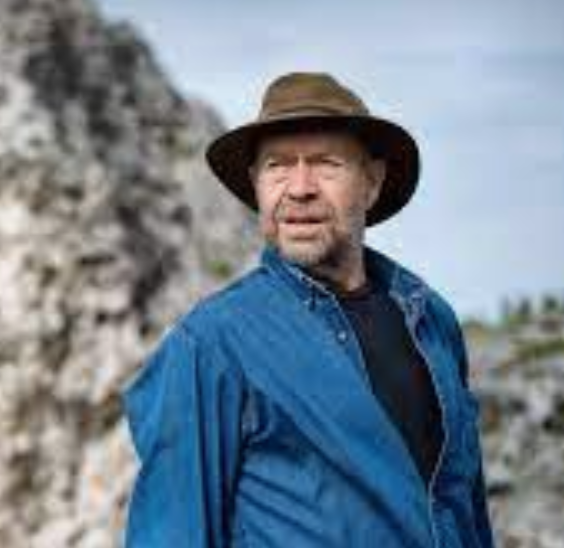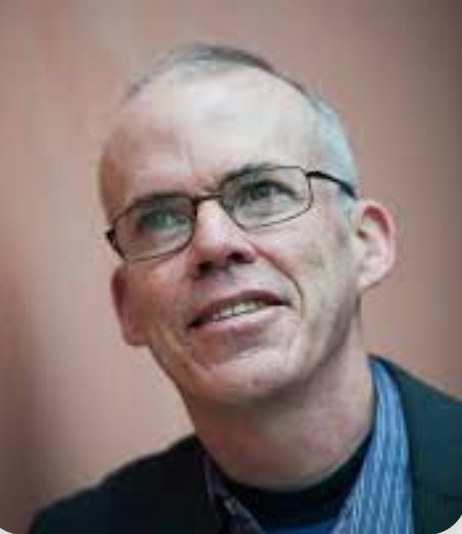Climate Optimist – Part 2

There’s More Good News in the World Than Bad In my last blog I shared with you the story of Miranda and Harland who were feeling overwhelmed by all of the negative news regarding climate change. After some research they discovered the term, “Climate Optimist,” and found a lot of good news climate stories as well as some excellent books and newsletters. As promised, I am continuing the second part of their story below:
Scrolling further they were pleased to find a new book by Chris Turner called, “How to become a Climate Optimist.” https://www.penguinrandomhouse.ca/books/668167/how-to-be-a-climate-optimist-by-chris-turner/9780735281974

Chris is a Calgary-based journalist who has been writing about the environment and climate change for 20 years. While recognizing the problems we have, he outlines many of the positive things that are happening.
One of the biggest takeaways is we can all be part of the solution and WE ALL HAVE A HUGE OPPORTUNITY TO CREATE A BETTER WORLD.
According to Turner, it is done not by knocking the old but by creating something better. He uses the Marshall Plan as a model. The way to fight fossil fuel is to find something better, i.e. cheaper, cleaner alternative energy – which is happening.
In their exploration they also discovered some terrific newsletters explaining what is really going on. All are free, but some ask for voluntary donations.
Here are just a few of the good happenings they found in Chris Tuner’s book and other sources including the newsletters:
- Scientists know a large part of the solution is to reduce greenhouse gasses produced mainly by fossil fuel. In the past few years there have been huge strides happening, faster than anticipated with alternative energy sources.

Both solar and wind power have come way down in cost and energy storage has immensely improved with advancing technology. Alternative energy is now less expensive than fossil fuels. Prices vary, however. According to the Climate Institute, in U.S. dollars, wind costs $20/kWh, and solar power $37. Other online sources discovered coal is $102, hydroelectric $85, gas $56 and nuclear $20 (after the cost of building the plants).
2) The Canadian Federal Government is calling for all provinces to be virtually off of fossil fuels for electricity by 2035.
A widespread belief is there will be an overall increase in demand for electricity and there will always be a need for some fossil fuel.
Also, as in Europe, many homes will produce their own electricity from solar power. Already Manitoba energy is 100% renewable (hydroelectric), and Ontario is 80%.
Ontario has recommitted to nuclear by making major financial commitments to increase the capacity of the Darlington, Pickering and Bruce Power Plants. Currently 60% of Ontario’s electricity is generated by nuclear. France’s is 70%.
Quebec, which was decommissioning its Gentilly-2 nuclear plant, is now considering recommissioning it. Nuclear energy is controversial and is expensive to build, but clean.
Many consider this nuclear commitment to be negative news, in large part because safe, long-term storage of nuclear waste has not yet been solved to the public’s satisfaction. The Japanese have just started putting some of their long-term waste waters from the Fukushima plant destroyed in 2011 by a tsunami into the Pacific Ocean, believing it to be safe.
The U.N. International Atomic Energy Agency believes it to be safe too, as does the U.S., Australia and the EU. The amount being released is small and is neutralized by water.
Many disagree, in particular the local fishermen who fear for their livelihood.
Nuclear will likely continue to be controversial until the fear of radiation, first created by atomic bombs, then, Chernobyl, tsunamis and madmen like Putin, is reduced. In my opinion, the reality is sickness and death from nuclear pales beside the negative impact of coal on our environment.
Once built, the cost of nuclear generated energy is less than other sources.

Many believe smaller nuclear plants can be built and are a part of the solution. Bill Gates and James Hansen, one of the world’s foremost climate scientists, are big believers that nuclear power is part of the solution. I am in their camp.
Alberta has a way to go with alternate energy but has been building more alternative energy sites than other provinces, so much so that the Premier has called for a 7 month pause. Many believe the pause is to support the oil companies. She is a big supporter of the oil industry.
3) In many countries, much of the electricity is now provided by alternative energy: Iceland is 98%, Uruguay 95%, Canada 80% and China 51%.
4) Many of the world’s biggest companies are now net zero, including APPLE. Seven hundred of the world’s largest companies have committed to being carbon neutral by 2050, including Exon Mobil, though many critics are skeptical this is just “green washing,” (saying they are doing things that are green but are not).
Countries and municipalities are making big changes too: Houston, the oil capital of the U.S., is aiming to be net zero by 2050. Essen, the former capital of Germany’s coal industry has changed and was chosen as the green capital of Europe in 2017.
5) There was a huge recent legal win in Montana for 16 youths who won a case against the state for violating their rights to a clean and healthy environment. The U.N. has also just confirmed children have a right to a clean environment.
6) Canada is stopping subsidies to fossil fuel companies. By the end of 2024, it will be the first country in the world to do so.

7) At the COP 15 (U.N. Biodiversity Conference) in Montreal last December, 195 countries agreed to have 30% of their land and waters protected by 2030. As hikers, Miranda and Harland thought, “This is BIG.”
8) 14% of the new cars produced in the world are electric. Fifty percent of the new EVs (electric vehicles) are made in China. The Ontario and Federal Government have committed tens of billions to Stellantis and Volkswagen Auto Haus to make EV batteries.
9) Green energy now provides more employment than fossil fuel, though the fossil fuel industry pays higher wages.
10) In Ecuador, in a recent country wide vote, the people turned down an oil company’s request to drill in protected areas.
11) According to venture capital data, solar storage and wind power are yesterday’s successful ventures. Venture capital money is now going towards carbon removal devices, next generation fuels, food storage substitutes and soil improvements. In Canada, 12% of GHG (green house gas) comes from agriculture.
12) They were reminded of the huge success of the Montreal Ozone protocol signed in September 1987 by 197 countries. The treaty banned the use of CFCs coming largely from cooling devices and aerosol cans because they were eating a hole in the ozone layer and heating the climate.
Since then the holes in the ozone layer have partially filled, reducing temperatures by an estimated 0.8 degrees and has prevented an estimated 2 million cases of skin cancer. It will take another 50 years for the holes to completely seal. This success showed if countries worked together a huge impact can be made to the health of the planet.
13) The announcement by Ontario Premier Doug Ford, the Ontario government was retracting their misguided legislation which changed protected green space so it could be used for housing. This was a huge victory.
It showed the effect people working together can have on public policy and the number of people who care about the environment.
14) There are also hundreds of millions of people all over the world doing many green things, ranging from: bicycling and walking, to recycling, planting trees creating, greening their home, encouraging others, forming community action groups, changing behaviour and, donating to green causes. This probably includes you. All of this adds up.
They read all of the newsletters and were heartened. Since they were not long and payment was voluntary, they subscribed to them all. While the content varied, they all advocated learning more about both the good and bad, talking together and taking action. Here is a list:

- BILL MCKIBBEN, one of the world’s most prominent activists has strong opinions and suggests forming community groups. https://billmckibben.substack.com/
- THE ENERGY MIX. Lots of news. https://www.theenergymix.com/
- Katharine Hayhoe, the Nature Conservancy’s top scientist IN TALKING CLIMATE says, “Stop following the gloom and doom stories. Read good news stories. Learn, share and take action.” https://www.talkingclimate.ca/
- Harvard’s CLIMATE OPTIMIST. Good news stories and action suggestions. https://www.hsph.harvard.edu/c-change/climateoptimist/
Miranda and Harland are now “Climate Optimists,” and in spite of setbacks, including SUNCOR’S return to all fossil fuel production, now see WE have huge opportunities and HOPE. Hope, according to the August NEWSWEEK lead article, is our best tool.
Till next time
Chris Snyder
Climate Optimist
Climate Optimist: Part 1
You May Also Like

Saying Positive and Supportive Things to Others
August 13, 2023
Getting Along and the Golden Rule
July 31, 2022